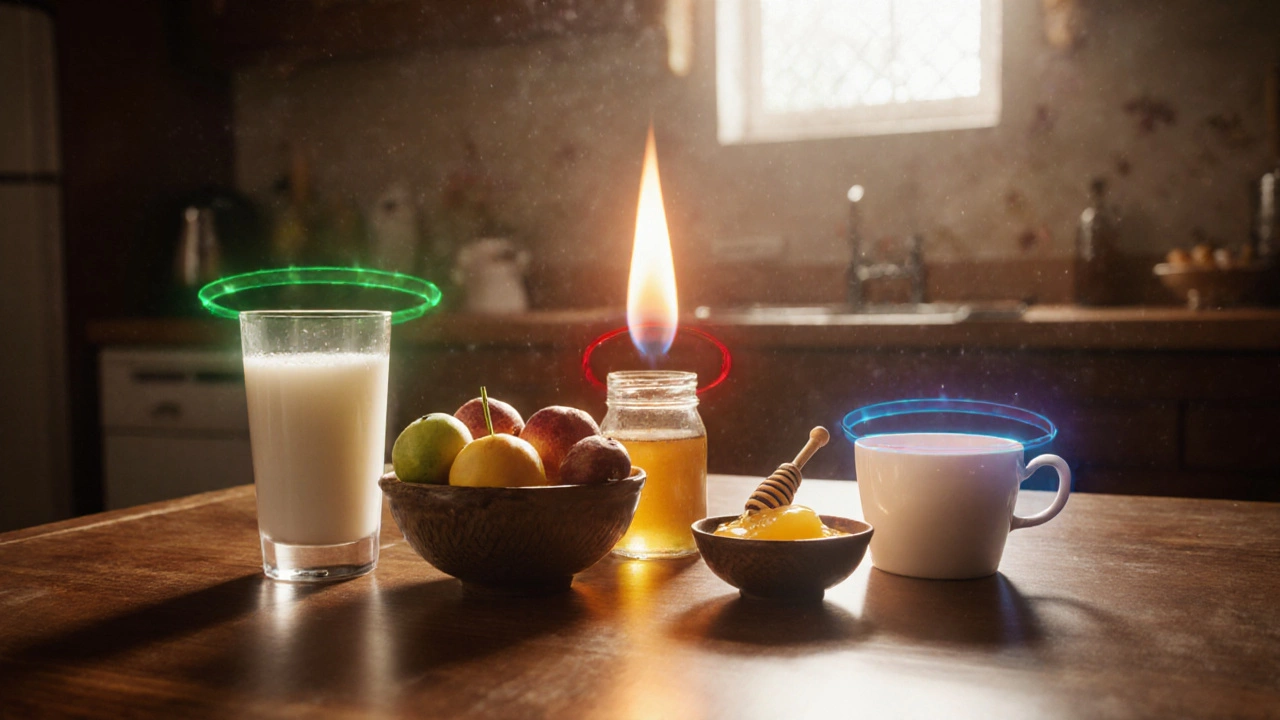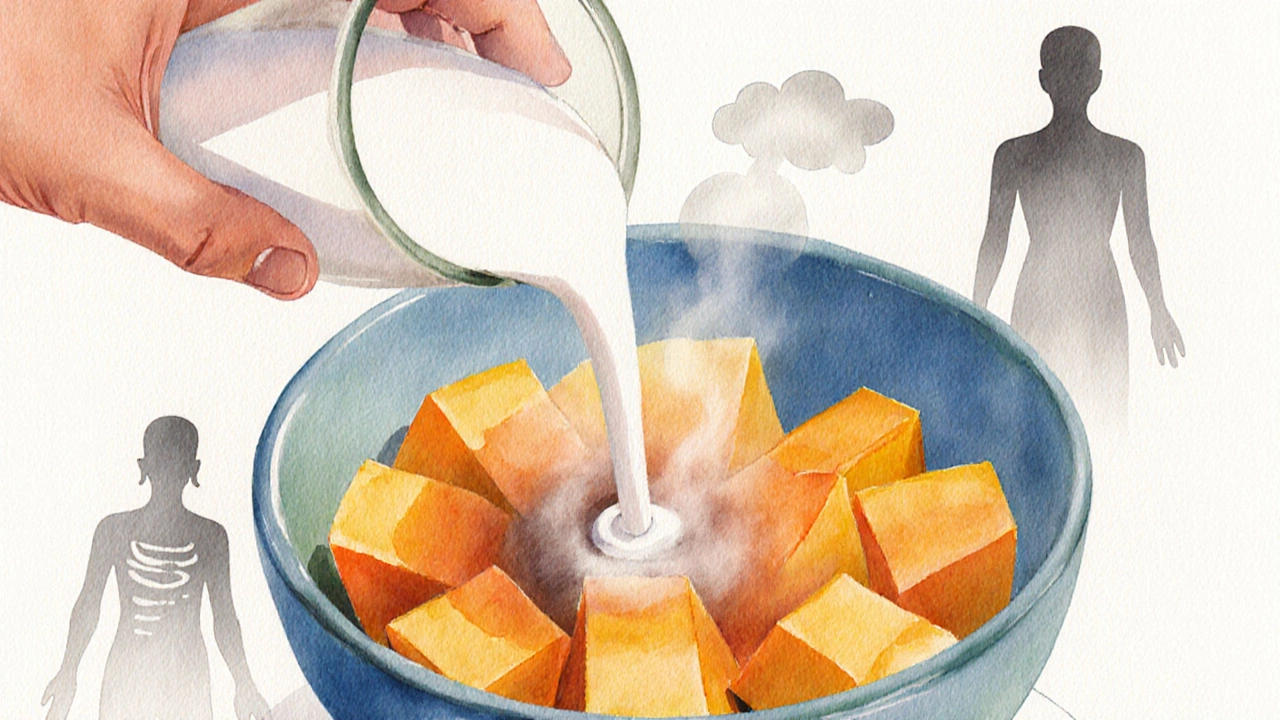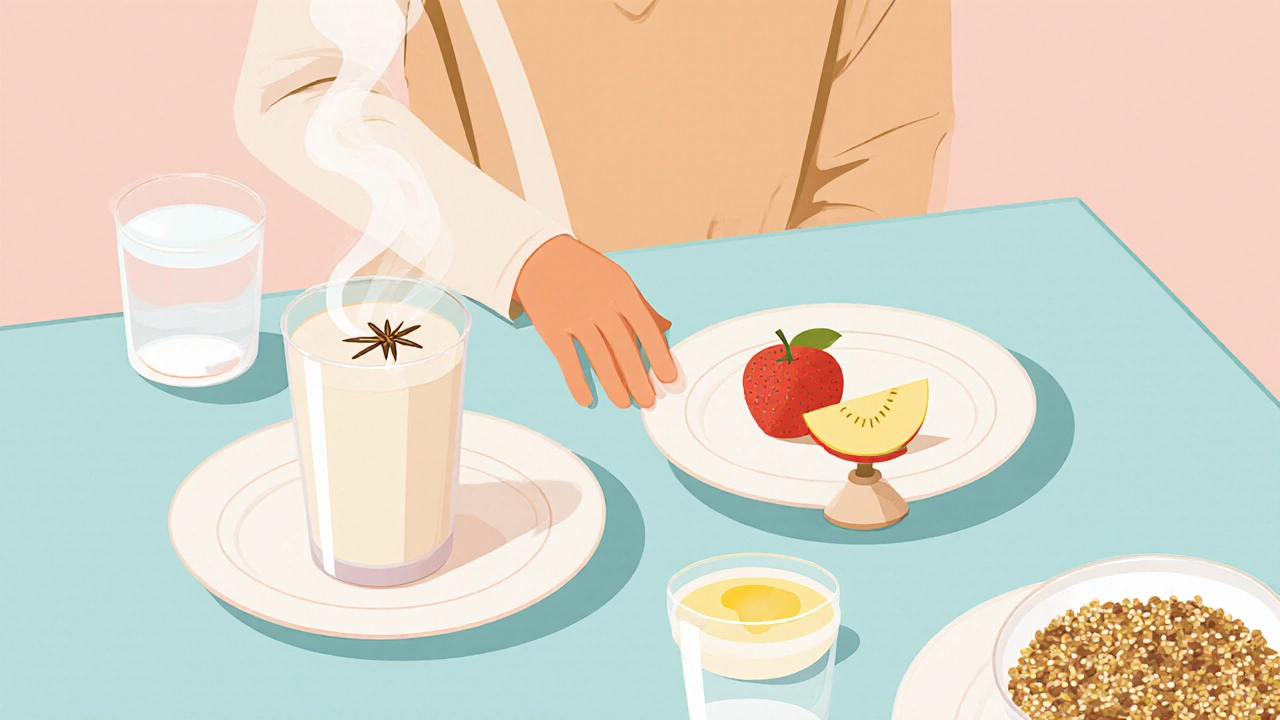
Key Takeaways
- Viruddha Ahara means "incompatible foods" and can disrupt the three doshas.
- Common harmful pairs include milk with fruit, yogurt with honey, and ghee with water.
- Each combo affects Agni (digestive fire) and may create Ama (toxins).
- Follow the checklist at the end to plan balanced meals.
- If you notice bloating or lethargy, check whether any prohibited pairing occurred.
Ever wondered why your stomach feels heavy after a seemingly normal meal? In Ayurveda, the culprit is often Viruddha Ahara, a principle that defines food incompatibility - the practice of eating certain foods together that disturb the body’s natural harmony. By respecting these ancient guidelines, you can keep your dosha balance intact, maintain strong Agni (digestive fire), and avoid the build‑up of Ama (toxins).
Why Food Pairing Matters in Ayurveda
Ayurveda views food as medicine. Every food carries a specific taste (rasa), energy (virya), and post‑digestive effect (vipaka). When two foods with opposing qualities are combined, they can neutralize each other’s beneficial actions or even create new, harmful effects. This is why Ayurvedic texts warn against certain pairings - they can over‑stimulate or suppress a particular dosha, leading to chronic imbalance.
Core Entities That Influence Compatibility
Understanding the following entities helps you see why a combination is flagged as harmful:
- Dosha: The three constitutional forces - Vata, Pitta, and Kapha - that govern motion, metabolism, and structure.
- Agni: The fire that digests food; strong Agni leads to clear energy, weak Agni creates Ama.
- Ama: Undigested residue that clogs channels, manifesting as sluggishness, foggy mind, or skin issues.
- Ghee: Clarified butter, highly nourishing, but heavy on Kapha when mixed with water or cold foods.
- Milk: Cooling, sweet, balances Vata but can ferment when paired with acidic fruit.
- Fruit: Generally light and sweet; most Ayurvedic texts advise eating it alone or with a little dry fruit.
- Yogurt: Probiotic, best for Pitta, but becomes toxic when mixed with honey or fruit.
- Honey: Heating, sweet, should never be heated and should not combine with sour or dairy foods.

Top 15 Food Combinations to Avoid
Below is the most‑referenced list of prohibited pairings, each with a short reason tied to the entities above.
| Food Pair | Reason (Dosha / Agni Impact) | Typical Symptoms |
|---|---|---|
| Milk + Fruit (especially acidic) | Ferments milk, aggravates Kapha & Vata, weakens Agni | Bloating, mucus, skin eruptions |
| Yogurt + Fruit | Creates Ama, disrupts Pitta balance | Indigestion, gas, lethargy |
| Yogurt + Honey | Honey’s heating clashes with yogurt’s cooling, spikes Pitta | Acidity, mouth ulcers |
| Milk + Honey | Both sweet; together they generate excess Kapha and Ama | Weight gain, sluggishness |
| Ghee + Water (or Ice‑cold drinks) | Water dilutes Ghee’s heating, suppresses Agni | Indigestion, heaviness |
| Ghee + Milk (in large amounts) | Excess Kapha, heavy on the stomach | Congestion, lethargy |
| Banana + Milk | Both heavy; creates mucus, impairs Agni | Cold, excessive phlegm |
| Cheese + Fruit | Fermentation of dairy with fruit acids, Ama formation | Acid reflux, bloating |
| Cold Drinks + Hot Meals | Sudden temperature change shocks Agni | Heartburn, weak digestion |
| Pulses + Dairy (except clarified butter in moderation) | Pulses are heavy; dairy adds Kapha load, causing Ama | Gas, heaviness |
| Fruit + Milk + Yogurt (mix) | Triple incompatibility - ferments quickly, destroys Agni | Severe bloating, nausea |
| Honey + Salt | Both stimulate Pitta; combined they can overheat the body | Headache, dryness |
| Honey + Oil (cooked together) | Heat transforms honey into toxins | Skin eruptions, digestive upset |
| Raw Veggies + Cooked Starch (in same dish) | Raw reduces digestion speed, cooked starch needs strong Agni | Cramping, diarrhea |
| Tomatoes + Dairy | \nAcidic tomatoes ferment dairy, creating ama | Acidity, mucus |
How Each Pair Affects Your Doshas
Not all combos are bad for every constitution. Here’s a quick map:
- Vata types (lean, creative): Sensitive to cold, dry foods. Mixing milk with cold fruit spikes Vata, causing dryness and anxiety.
- Pitta types (medium, ambitious): Heat‑prone. Yogurt with honey or spicy foods can overheat Pitta, leading to inflammation.
- Kapha types (solid, calm): Naturally heavy. Ghee with water or excessive dairy adds more Kapha, resulting in sluggish metabolism.
Practical Tips to Keep Your Meals Viruddha‑Free
- Separate fruit from main meals. Enjoy fruit as a snack 30‑60 minutes before or after the meal.
- Use clarified butter (ghee) sparingly and never mix it with cold liquids.
- If you love milk, pair it with warm spices like cardamom or ginger to aid digestion.
- When making a yogurt‑based dish, avoid adding honey, fruit, or cheese; opt for cucumber or mild spices instead.
- Plan your meals around a single dominant taste (sweet, sour, salty, bitter, pungent, astringent) to keep Agni steady.

Quick Reference Checklist
- ✅ No milk + fruit in the same plate.
- ✅ No yogurt + honey or yogurt + fruit.
- ✅ No ghee mixed with water or ice‑cold drinks.
- ✅ Avoid honey in cooked oil or baked at high temperatures.
- ✅ Keep dairy away from acidic foods like tomatoes or citrus.
- ✅ Separate raw vegetables from heavy starches in one dish.
Troubleshooting Common Issues
If you still feel uncomfortable after meals, try the following steps:
- Identify the suspect combo. Look back at the last 24‑hour food log.
- Hydrate wisely. Warm water aids Agni; avoid cold drinks immediately after a heavy meal.
- Gentle herbs. A pinch of ginger powder or cumin‑fennel tea can reignite digestion.
- Rest. Allow 2‑3 hours before any vigorous activity.
Frequently Asked Questions
Why does Ayurveda caution against mixing milk and fruit?
Milk is sweet and cool, while most fruits are acidic and light. When combined, the fruit’s acidity ferments the milk, creating Ama and weakening Agni. This leads to bloating, excess mucus, and imbalanced Kapha.
Can I ever eat yogurt with honey in moderation?
Traditional Ayurveda advises against it completely because honey’s heating quality clashes with yogurt’s cooling nature, sparking Pitta overactivity. Even a small amount can generate toxins if your digestion is weak. If you must, wait at least two hours between the two foods.
What if I love ghee but also need to stay hydrated?
Drink warm water or herbal tea instead of ice‑cold drinks after a ghee‑rich meal. Warm liquids support Agni without diluting the nourishing effect of ghee.
Are there any safe fruit‑dairy combos?
A small amount of ripe banana with warm milk can be soothing for Vata types, provided the banana is not over‑ripe and the milk is heated with a pinch of cardamom. Always keep the portion modest.
How does my constitution (dosha) affect which combos I should avoid?
Vata people should steer clear of cold, dry pairings (e.g., milk + raw fruit). Pitta individuals should avoid heating combos (e.g., yogurt + honey). Kapha types need to limit heavy, oily pairings (e.g., ghee + water or excessive dairy). Tailor the list to your dominant dosha for best results.

Write a comment